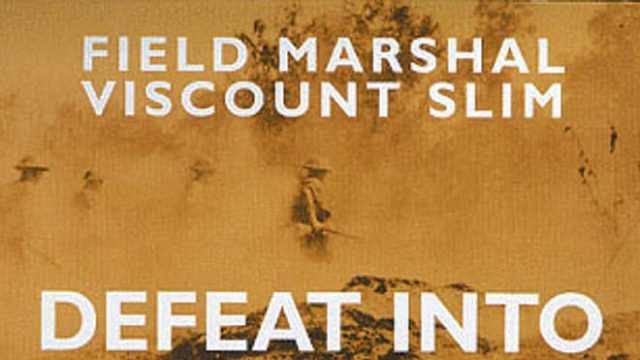The history of war predates history itself. It started when some member of the homo sapiens club broke off a conveniently-sized branch and clubbed the chap in the next tree with it. In the millennia since, every culture that has survived to the 21st century has done so by learning how to wage war. And yet, by John Keegan’s estimate, around 70 per cent of the world’s land area has never seen organised fighting simply because the terrain or the climate is inimical to the movement of large numbers of people.
Soldiers sometimes talk about “the grain of the land”. Where the grain is vertical, or waterless, or it’s freezing cold, or steamy hot, very few all-out battles occur. Far more men die in Siachen of exposure and/or pulmonary oedema than of bullet-wounds. The other 30 per cent of the world’s real estate has been fought over many times. It’s no accident that Panipat and Sekigahara have seen so many battles. It was impossible to control Delhi without winning at Panipat or thereabouts. It was impossible for a daimyo to aspire to the Shogunate without winning a battle at Sekigahara (The Central Plain), thereby controlling access to the Emperor.
Eye-witnesses and participants have described those campaigns in terms that range from the lyrically epic to the brutally statistical. Soldiers develop an eye for terrain which then translates into descriptions of locales from an unusual perspective. Keegan, retired Lecturer of Military History at Sandhurst, does it with clinical logic allied to formidable erudition and a humanist attitude. In A History of Warfare, Keegan informs us that there has never been a land battle north of 80 N (where there was a little spot of bother in 1943 between the Germans and the British at a weather station in northern Norway). At the same time, the town of Adrianople (Erdinirne) in Turkey has “hosted” as many as 15 recorded battles; Belgium was nicknamed the “Cockpit of Europe” because it saw so many major wars. Keegan can evoke emotion while writing unemotionally in the third person about events that occurred in prehistory.
The Punjab rivals Belgium as a locale for battles. It has seen innumerable variations of the same theme: some invader sweeps out of the Central Asian passes, crosses the Indus at Attock and institutes a bitterly fought campaign in the Punjab. In the winter of 1845-46, the Khalsa crossed the Sutlej at Harike Patan and tried to blast John Company out of North India in the first Anglo-Sikh War. That war starred characters like the allegedly depraved Maharani Jindan (Maharaja Ranjit Singh’s bodacious widow and mother of his heir Dalip), Dr. Josiah “Man who would be king” Harlan, Alick Gardner of Wisconsin who became Gurdana Khan, the first marshal of the army of Jammu & Kashmir. Add the Kohinoor, Kashmiri prostitutes, bible-thumping British generals and predatory Simla grass widows.
That’s exactly what George MacDonald Fraser did, with Flashman and the Mountain of Light.
Flashy flees with many a fearful backward glance through the battlefields and boudoirs of that short but viciously fought campaign. Everything from Ferozpore to the riverbanks at Sobraon is described from the perspective of a cynical coward with no illusions about war and an eye for the grain of the land. Sobraon, long referred to as “the Waterloo of India”, was the place where “John Company and Sam Khalsa settled their accounts” after a draw at Midnight Mudki, a battle fought in total darkness.
Fraser is matched only by Field-Marshal the Viscount William Joseph Slim in his account of the 14th “Forgotten” Army’s Burma campaign in Defeat into Victory. Slim, the son of a lalaji green grocer, wrote with more elegance and wry humour than most. He took the beaten remnants of British forces driven out of the Far East and forged them into the weapon, which won the Battle of the Tennis Court in Kohima. Sitting mostly in Fort William, Calcutta, and travelling incognito to the frontlines as they shifted, Slim mapped the entire campaign. You can’t do better for laconic commentary on the landscape than “Uncle Billy Slim”.




